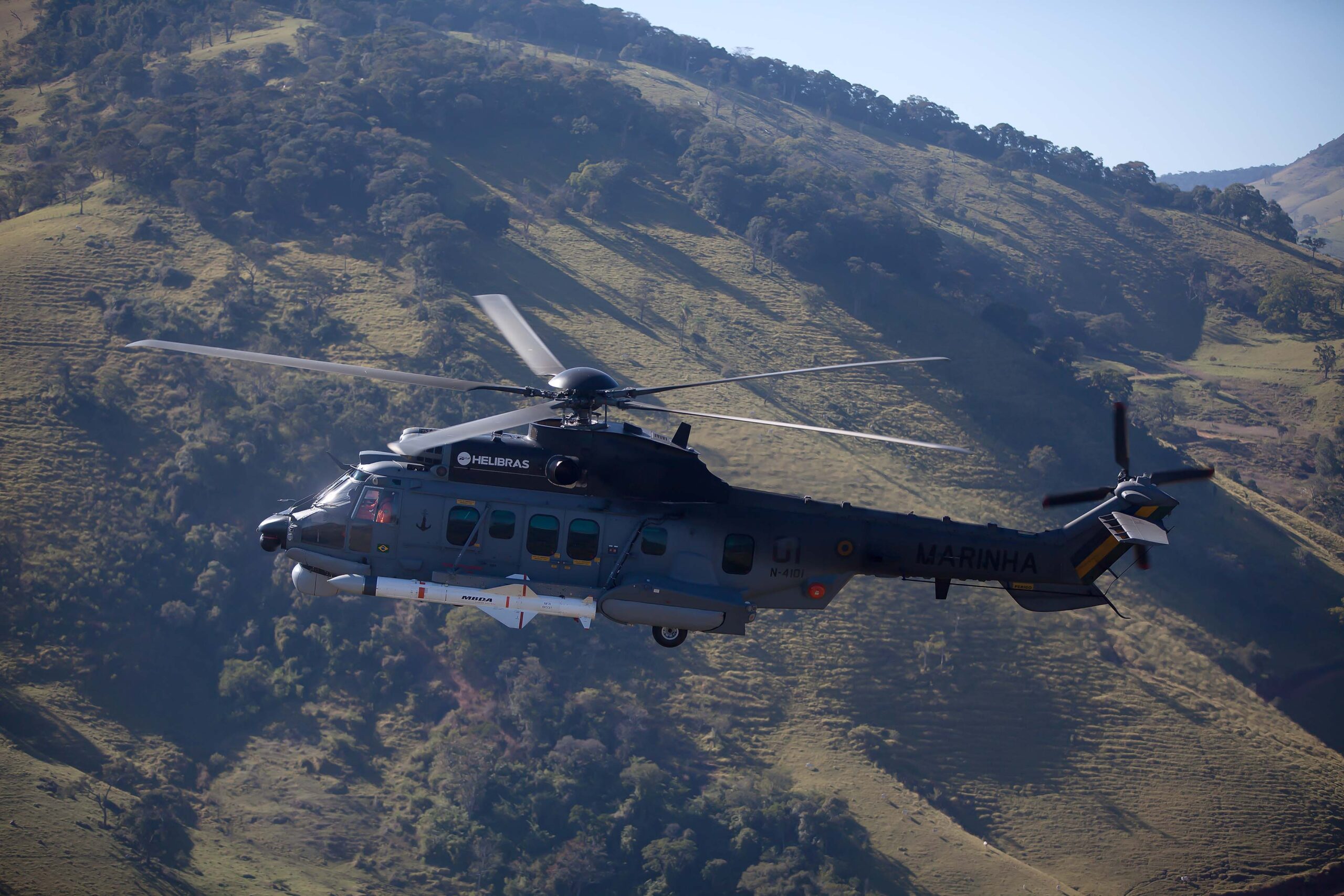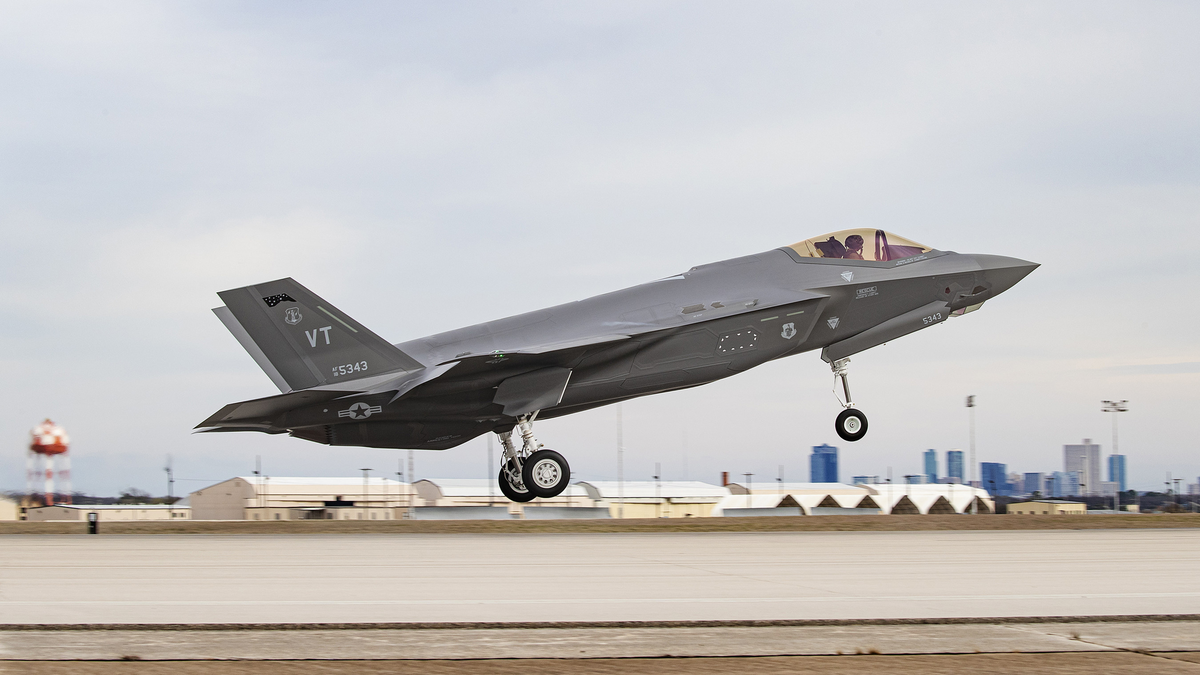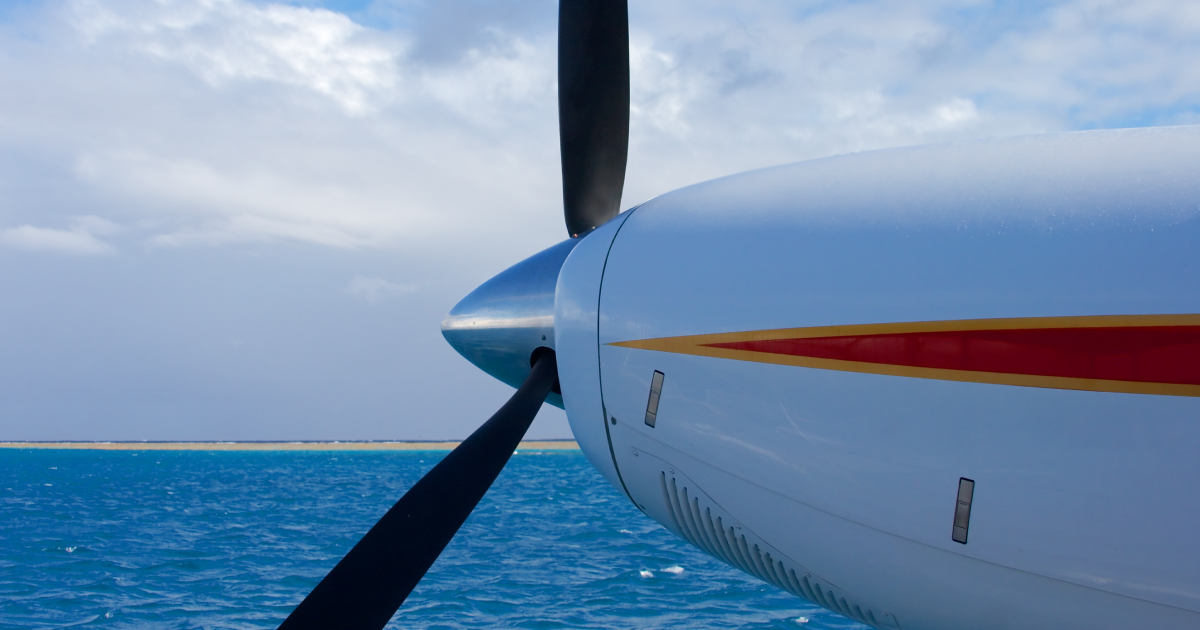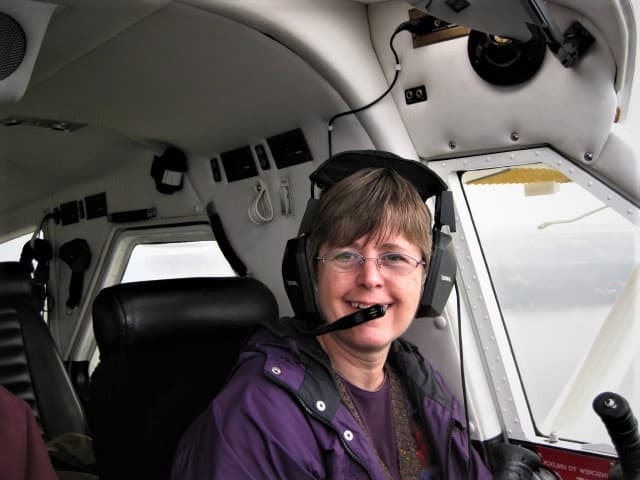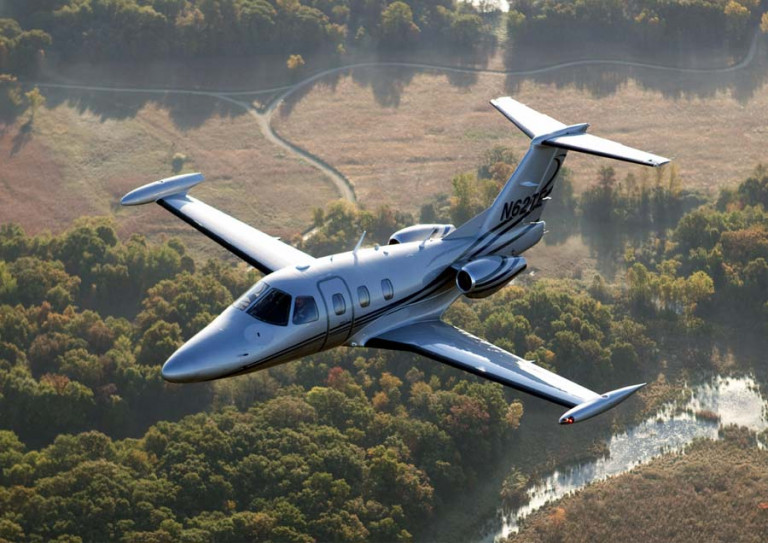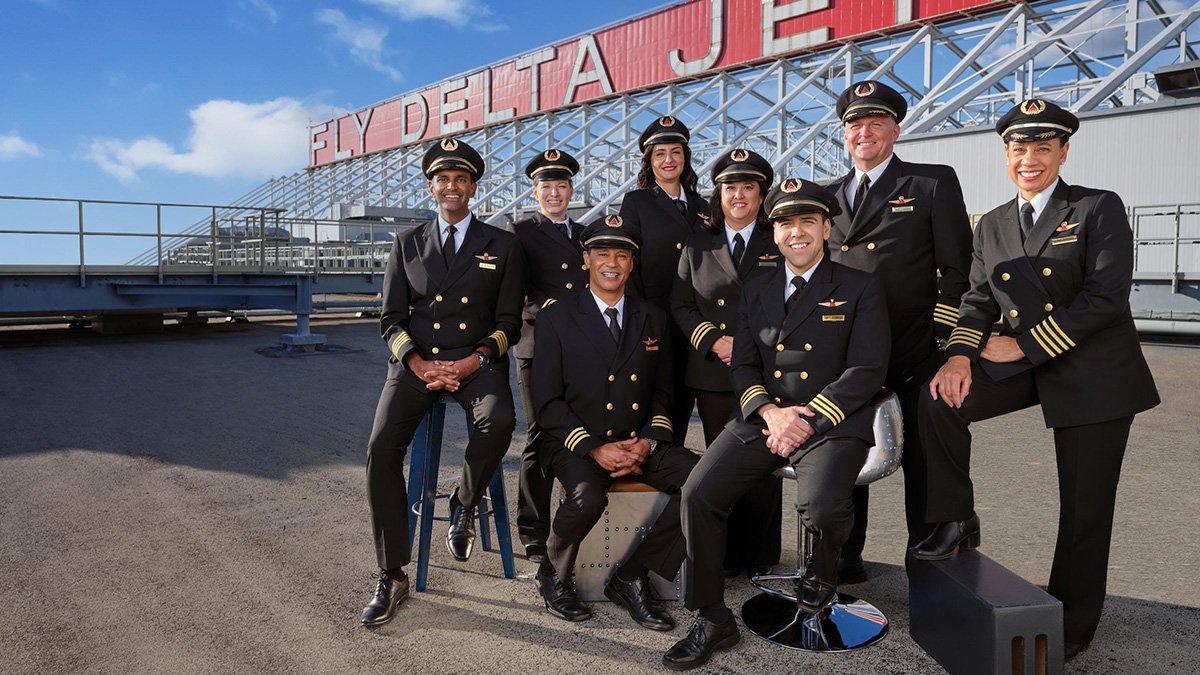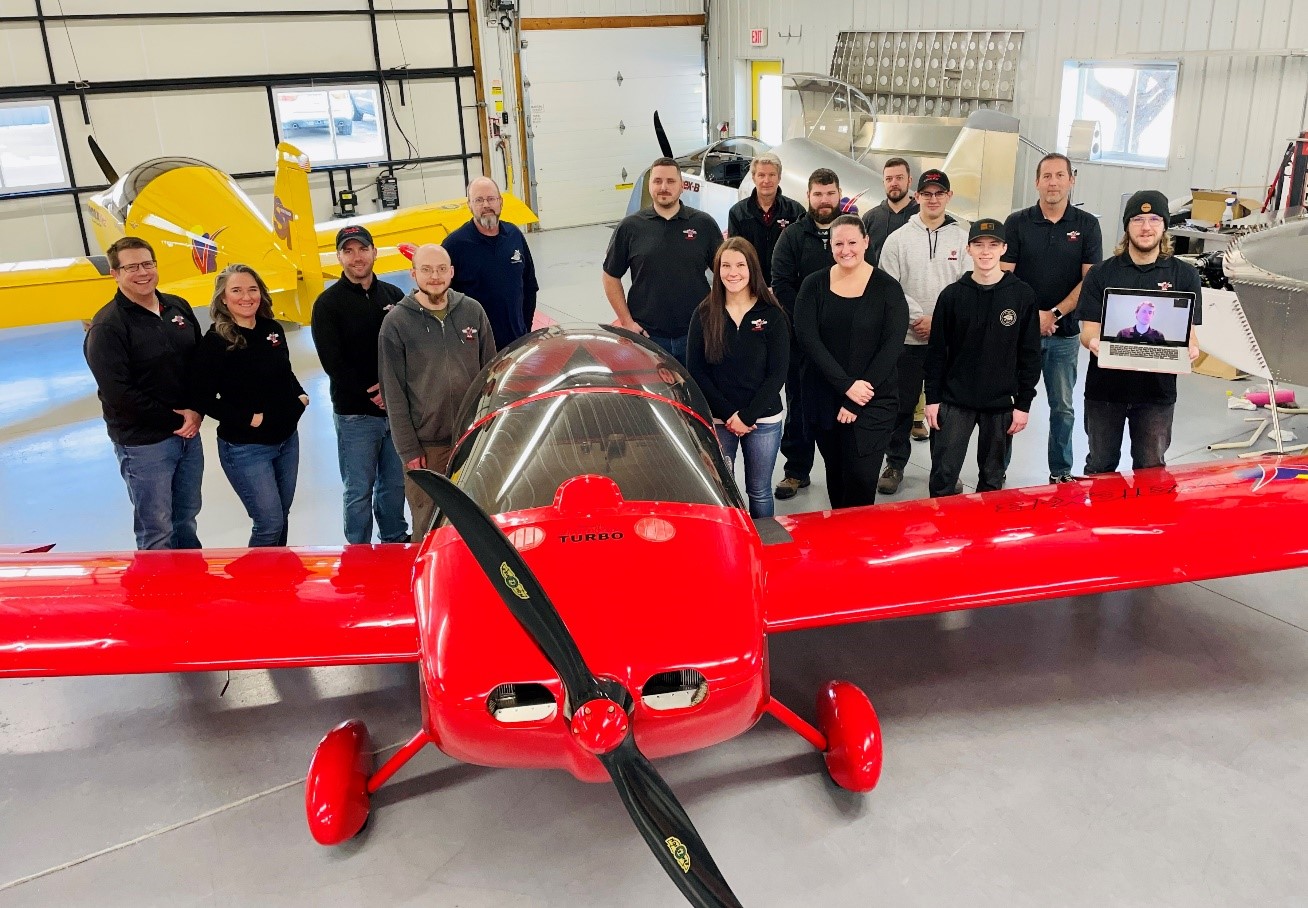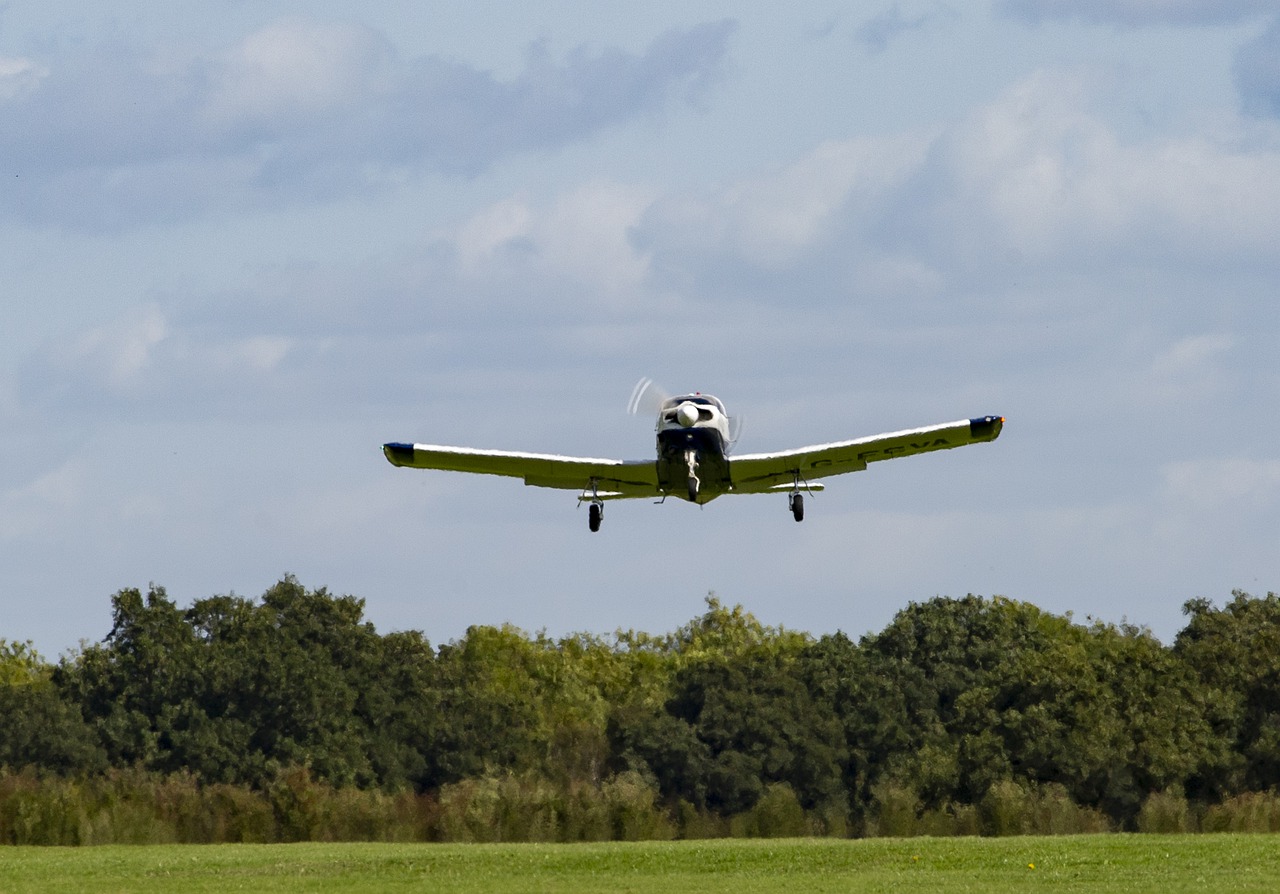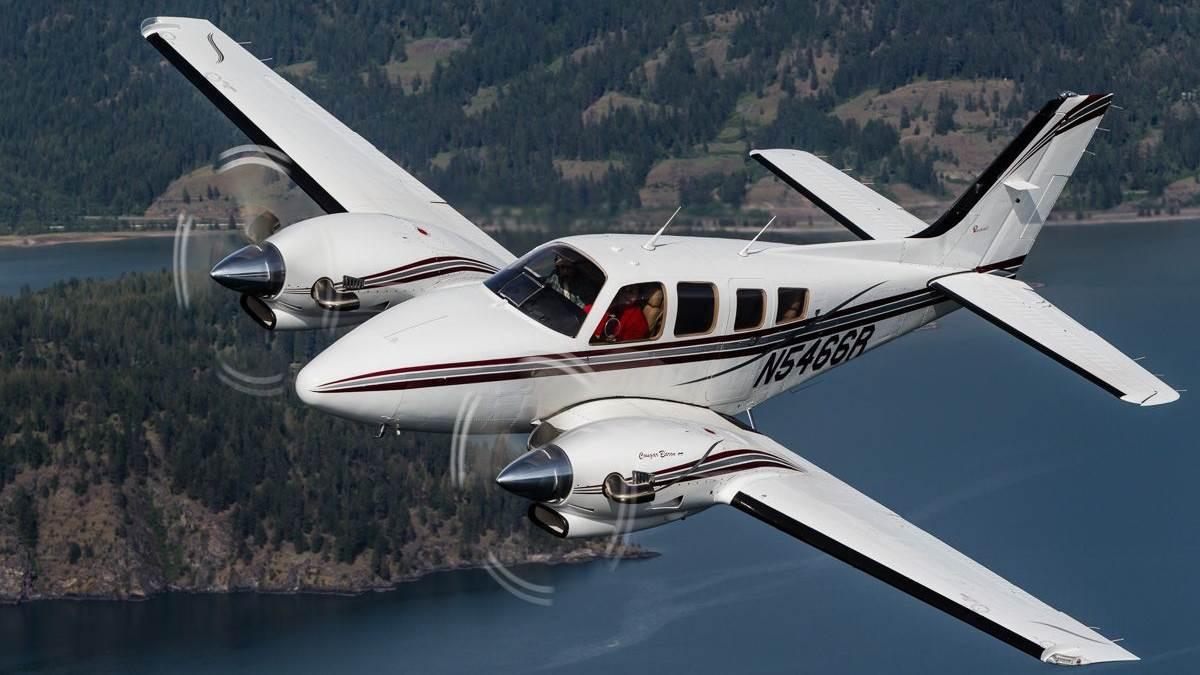Gulfstream G650/G650ER
Gulfstream G650/G650ER user+1@localho… Mon, 11/22/2021 - 21:17 The Gulfstream G650, G650ER, G700 and G800 are ultra-long-range business jets produced by Savannah, GA-based Gulfstream Aerospace Corp. From a range perspective, these airframes—which...
The Gulfstream G650, G650ER, G700 and G800 are ultra-long-range business jets produced by Savannah, GA-based Gulfstream Aerospace Corp. From a range perspective, these airframes—which are based on the GVI type—provide the greatest capability among current Gulfstream models. However, despite that positioning in the Gulfstream product series, they share a number of specifications with other Gulfstream airframes, including the GVII-based G500 and G600, as well as the G550. Launched on March 13, 2008, rolled out on Sept. 29, 2009, and described as being "ultra-large-cabin [and] ultra-long-range," the G650 made its first flight from the Savannah/Hilton Head International Airport on Nov. 25, 2009, a flight that lasted only 12 min. because of vibrations that were encountered from one of the airplane's landing gear doors. The program suffered another setback on April 2, 2011, when one of the flight-test airframes—registered as N652GD—crashed while taking off from the Roswell International Air Center in New Mexico, resulting in the deaths of two test pilots and two flight-test engineers. According to the National Transportation Safety Board’s (NTSB) final report, the probable cause of the accident was “an aerodynamic stall and subsequent uncommanded roll during a one-engine inoperative takeoff flight test.” Despite that setback, the G650 completed its flight-test program and received approval from the FAA on Sept. 7, 2012, with the first delivery taking place a little more than three months later on Dec. 20, 2012.
Unlike the nearly three-year-long flight-test program of the G650, the upgraded G650ER went from announcement to certification to delivery in a matter of months. The former occurred on May 19, 2014, with Gulfstream announcing on Oct. 8, 2014, that the modifications which distinguish the G650ER from the G650 were certified by the FAA. Subsequent to receipt of FAA approval, Gulfstream announced on Nov. 14, 2014, that the first delivery had taken place.
Launched on Oct. 21, 2019, at the National Business Aviation Association (NBAA) Convention and Exhibition, the G700 is an updated version of the GVI type that incorporates a longer fuselage and greater wingspan in comparison to the G650 and G650ER. Alongside the launch of the G700, the type’s launch customer—Qatar Airways—was also announced, with that operator placing orders for 10 airframes for its Qatar Executive charter service. Furthermore, on the same day that the G700 was unveiled and Qatar Airways named as the launch customer, Flexjet was announced as the first fleet customer in North America to order the airframe. Subsequently, the first flight of a G700—performed by an airframe registered as N700GA—took place on Feb. 14, 2020, from Savannah, a flight that lasted 2 hr. 32 min. and which was powered by “a 30/70 blend of sustainable aviation fuel.” Upon completion of the test program and certification, Gulfstream expects to deliver the first G700 in fourth quarter of 2022.
Nearly two years after the launch of the G700—and prior to that airframe being certified and entering service—Gulfstream launched the fourth GVI-based airframe on Oct. 4, 2021, an airplane that is marketed as the G800. In comparison to the G700, the G800 will have a shortened fuselage but increased range, while also being powered by the same series of Rolls-Royce engines. At the time of the G800’s 2021 launch, Gulfstream stated that the first deliveries are expected to take place a year after the G700 in 2023.
Regardless of any differences between the commercial designations of the type, the type certificate for the GVI type is held by Gulfstream Aerospace Corp. of Savannah.
Passenger Capacity and Cabin Configurations/Dimensions/Outfitting
Beyond its two required crewmembers, the G650 and G650ER are certified to a maximum passenger capacity of 19, with the G700 and G800 planned to retain the same approved capacity. However, when the cabin is configured for sleeping accommodations, that capacity is reduced to a maximum of six in the G650 and G650ER, seven in the G800 and eight in the G700. Regardless of what the maximum capacity of the cabin is, G650 and G650ER passengers are accommodated in a 46-ft. 10-in.-long cabin—excluding the baggage area—that has a total volume of 2,138 ft.3 Other cabin dimensions common to the G650 and G650ER include the finished cabin height of 6 ft. 3 in., as well as the finished cabin width of 8 ft. 2 in. Beyond the space available in the cabin, passengers of all four GVI-based airplanes also have access to a baggage compartment that has a usable volume of 195 ft.3.
The G650 and G650ER's cabin features 16 panoramic windows, a cabin altitude of 4,060 ft. at 45,000 ft. and cabin air that is completely refreshed every 2 min. Cabin connectivity features include the availability of two multichannel satellite communications systems, as well as a local wireless network that enables printing. In addition to those standard communication systems, Ka-Band satellite internet service provided by Jet ConneX is available as an option for all new-production G650 and G650ERs, as well as an aftermarket option for in-service airplanes. Improved technology is also applied to the control of a number of cabin systems, including entertainment, lighting, temperature and window shades. These systems are controlled by the Gulfstream Cabin Management System (GCMS), which passengers are able to access via Apple and Android smartphones and tablets.
While the cabins of the G700 and G800 will retain the same maximum passenger capacity of as the other GVI commercial designations—as well as matching the finished cabin height and width of the G650 and G650ER—G700 will have an increased cabin length, once again excluding the baggage area, of 56 ft. 11 in. and a total cabin volume of 2,603 ft.3 Another distinguishing feature of the G700 is the number of “panoramic-oval” windows on each side of the lengthened cabin, with two added on each side in comparison to the G650/G650ER, for a total of 20 windows. Other cabin changes in comparison to the G650/G650ER—such as “adapting the data-concentration and power-distribution network from the G500/G600”—allow for more available space in the cabin to accommodate additional living or crew-rest areas.
When it was first announced, Gulfstream stated that the G700 would have a cabin altitude of 3,290 ft at 41,000 ft., while also matching the aforementioned cabin altitude at 45,000 ft. and featuring a 4,850-ft. cabin altitude at 51,000 ft. However, the company announced on June 24, 2021, that the G700 would have a reduced cabin altitude of 2,916 ft. at 41,000 ft., which improves on the G650’s comparable advertised figure of 3,200 ft. The airframe manufacturer states that, for both the G700 and G800, one aspect of “The Gulfstream Cabin Experience” is the fact that the cabin air is “100% fresh [and] never recycled.”
The configurations available for the G700 include an option that has “up to five living areas,” with that configuration also having a galley located in the forward portion of the cabin. The typical cabin layout will have four living areas, including a club section that has four chairs in the forward part of the cabin and entertainment section further aft that features a “pop-up, 32-in. ultra-high-definition monitor” located in a credenza that faces an “80-in., three-place divan.” Also found in the typical configuration is a dining area and, in the aft portion of the cabin, a bedroom that is fully enclosed and which includes a 46-in.-wide bed. In that aft bedroom area, which is described as a “master suite” by Gulfstream, an optional shower can be included in the lavatory. The G700’s dining area has six seats, four of which are seated in a “conference grouping” and the other two located across the aisle. Additional configurations—of which “there are dozens of different layouts” thanks to the modular interior configuration—include a four-living-area configuration that incorporates a forward “ultragalley” that is located on the right side of the cabin which has “more than 10 ft. of counterspace.” From a connectivity perspective, the Honeywell-provided Jet ConneX Ka-band internet—which utilizes Inmarsat’s I-5 satellite communications network—is a “no-cost option” which gives users download speeds of 15 Mbps, high-speed internet, video streaming and “Wi-Fi calling through passengers’ mobile phones.” Another passenger-comfort feature available for the cabin is circadian lighting that is described by Gulfstream as reducing the impact of jet lag “by simulating the sunlight of [the passenger’s] next time zone.”
In contrast to the five living areas available in the G700’s cabin, the reduction in the cabin and fuselage length of the G800 will reduce the number of possible living areas to four. Excluding the baggage area, the cabin length is reduced by more than 10 ft. to 46 ft. 10 in., with the cabin volume similarly lowered to 2,138 ft.3 Also reduced are the number of windows (16), while one of the configurations promoted by Gulfstream has three living areas, a “dedicated crew compartment” and can seat as many as 15 passengers. A layout with four living areas is also promoted as being possible, with that configuration able to accommodate up to 17 passengers but not incorporating a crew compartment. Supplementing the G800’s ability to have cabin air that is “100% fresh [and] renewed every two to three minutes,” Gulfstream also promotes the airframe as having “a plasma-ionizing clean air system [that] neutraliz[es] 99.9% of airborne bacteria, spores and odors.”
Avionics
Pilots operating both the G650 and G650ER do so by utilizing Gulfstream's Planeview II flight deck, a system that is derived from Honeywell’s Primus Epic integrated avionics system and which includes four 14-in. liquid crystal displays (LCD). According to Gulfstream and Honeywell, other features of the PlaneView II include an automatic-descent mode, automatic dependent surveillance–contract (ADS-C), controller-pilot datalink communications (CPDLC); “a standby, multi-function controller that combines current display functionality with standby flight instruments;” the ability to utilize the wide area augmentation system (WAAS) to conduct localizer performance with vertical guidance (LPV) approaches, as well as the capability to perform required navigational performance authorization required (RNP AR) approaches. The Planeview II improves the safety of operations conducted at night or in low-visibility conditions through its standard enhanced vision system (EVS) and synthetic vision technologies. With respect to the former technology, the EVS II that both variants feature uses a "nose-mounted infrared camera [that] allows pilots to see what the human eye cannot by providing more detailed images of airports and surrounding terrain." Further enhancing the utility of the EVS is the fact that the images it produces can be shown on a head-up display (HUD) that "allows pilots to review data from a transparent screen in his or her forward field of vision." In addition to the EVS, the Planeview II also features a synthetic vision system (SVS) that is displayed on the primary flight display (PFD)—marketed as Synthetic Vision-Primary Flight Display (SV-PFD)—with the combination of flight instruments and “three-dimensional color images of” obstacles, runways and terrain promoted as providing “a more easily visualized landing approach for pilots.” The EVS II, HUD II and SV-PFD are standard features of the PlaneView II flight deck that is installed on the G650 and G650ER.
In contrast to the PlaneView II flight deck that is found on those versions of the GVI type, the G700 and G800 are equipped with the Symmetry Flight Deck, a system that is also based on the Primus Epic integrated avionics system. However, despite the fact that both the PlaneView II and Symmetry are based on that Honeywell avionics system, different type ratings will be required for pilots. Despite the fact that the G400, G500, G600, G700 and G800 all have the Symmetry Flight Deck, in order to operate the G700 and G800, pilots will need a GVIII type rating, while those that operate the G400, G500 and G600 will require a GVII type rating.
Pilots control the G700 and G800 using active-control sidesticks that are provided by BAe systems, with the Symmetry also featuring 10 touch-screen displays. Those 10 displays are comprised of four 13.1-in. displays which function as primary and multifunction displays (PFD/MFD), four touchscreen controllers—two of which are located “on the outboard side of each pilot” and two that are found on the pedestal—and two standby instruments that are located “under the glareshield.” The active-control sidesticks by which the pilots fly those airplanes “are electronically linked between pilot seats and provide both pilots with simultaneous tactile and visual feedback on control inputs.” Other features of the G700’s flight deck include an EVS and SVS, as well as Gulfstream’s predictive landing performance system. That latter system incorporates an airplane’s manual or auto-brake performance, flight-path vector, ground speed and touchdown point—as well as a given runway’s condition—“to predict and display on both the PFD and HUD where [an] aircraft will stop on the available runway.” As an airplane gets closer to the runway, the system will alert the crew if it “predicts” that the airplane “cannot be stopped on the pavement,” while aural and visual alerts are provided if an approach is continued. Images from the airframe’s SVS can displayed on either the PFD or the dual Collins Aerospace HUDs, while imagery from the EVS—which includes “a third-generation, high-resolution, cryogenically cooled InSb EVS camera”—is promoted as being displayed on the dual HUD. An additional benefit of the HUD, when combined with the enhanced flight vision system (EFVS), is that they can increase the ability of authorized operators to access airports.
Supplementing avionics features carried over from the G700—such as the predictive landing performance system—Gulfstream promotes the G800 as having a pair of HUD that can display the company’s combined vision system (CVS). As its name suggests, the CVS—which is noted as being “new”—combines the EFVS and SVS into “a single image,” the benefits of which include improvements to situational awareness and allow the airframe to “access more airports.”
Mission and Performance
From a range perspective, the G700 and G800 will have the greatest capability among the airframes currently produced by Gulfstream. In comparison to competing airframes, the G700’s 7,500-nm range matches what Dassault’s in-development Falcon 10X is expected to be capable of, while being slightly less than the 7,700-nm range of Bombardier’s Global 7500. Furthermore, the G800’s 8,000-nm range is most comparable to the 7,900-nm range of the Global 8000. From a size perspective, however, the 19-passenger maximum capacity of all four GVI-based airframes is matched by the Gulfstream’s G500, G550 and G600, as well as by the Global 7500.
|
Comparison: Gulfstream G700 and G800, Bombardier Global 7500 and 8000 and Dassault 10X |
||||||
|
|
Gulfstream G700 |
Gulfstream G800 |
Bombardier Global 7500 |
Bombardier Global 8000 |
Dassault Falcon 10X |
|
|
Maximum Passenger Capacity |
19 |
17 |
|
|||
|
Maximum Range (nm) |
7,500 |
8,000 |
7,700 |
7,900 |
7,500 |
|
|
Engine |
Rolls-Royce Pearl 700 |
General Electric (GE) Passport |
Rolls-Royce Pearl 10X |
|||
|
20-19BB1A |
|
|||||
|
Maximum Takeoff Weight (MTOW)(lb.) |
107,600 |
105,600 |
114,850 |
115,000 |
||
|
Wingspan |
103 ft. |
104 ft. |
110 ft. 3 in. |
|||
|
Length |
109 ft. 10 in. |
99 ft. 9 in. |
111 ft. |
102 ft. 2 in. |
109 ft. 7 in. |
|
|
Height |
25 ft. 5 in. |
25 ft. 6 in. |
27 ft. |
27 ft. 1 in. |
27 ft. 7 in. |
|
The operating limitations of the GVI type include a maximum operating Mach number (MMO) of 0.925 Mach and a maximum operating altitude of 51,000 ft., figures that will be shared by the G700 and G800. They also share long-range and high-speed cruise speeds of 0.85 Mach and 0.90 Mach, respectively, as well an initial cruise altitude of 41,000 ft. Despite those commonalities, the G650ER and G700 are differentiated from the G650 and G800 based on theoretical range. When carrying eight passengers and four crewmembers, and assuming NBAA instrument flight rules (IFR) reserves and flight at the long-range cruise speed, the G650 has a theoretical range of 7,000 nm, while the G650ER and G700 are able to operate to an increased range of 7,500 nm. Based on the same criteria, it is planned that the G800 will further increase that range to 8,000 nm. However, when operated at the high-speed cruise speed of 0.90 Mach, the range of the G650ER and G700 is reduced by 1,100 nm to 6,400 nm. Assuming each airframe’s maximum takeoff weight (MTOW), sea-level altitude and standard conditions, the respective takeoff distances for the G650, G650ER, G700 and G800 are 5,858 ft., 6,299 ft., 6,250 ft. and 6,000 ft.
Variants
|
GVI-Based Airframes |
|||||
|
Commercial Designation |
G650 |
G650ER |
G700 |
G800 |
|
|
Maximum Certified Passenger Capacity |
19 |
||||
|
Maximum Range (nm) |
7,000 |
7,500 |
8,000 |
||
|
Engine |
Rolls-Royce |
||||
|
BR725 (BR700-725A1-12) |
Pearl 700 |
||||
|
Basic Operating Weight (lb.) |
54,000 |
56,365 |
54,300 |
||
|
Maximum Takeoff Weight (MTOW)(lb.) |
99,600 |
103,600 |
107,600 |
105,600 |
|
|
Maximum Landing Weight (lb.) |
83,500 |
||||
|
Maximum Payload |
6,500 |
6,385 |
6,200 |
||
|
Maximum Fuel (lb.) |
44,200 |
48,200 |
49,400 |
||
|
Wingspan |
99 ft. 7 in. |
103 ft. |
|||
|
Length |
99 ft. 9 in. |
109 ft. 10 in. |
99 ft. 9 in. |
||
|
Height |
25 ft. 8 in. |
25 ft. 5 in. |
25 ft. 6 in. |
||
Rolls-Royce BR700-725A1 Engine
Both the G650 and G650ER are powered by a pair of Rolls-Royce Deutschland & Co. KG BR700-725A1-12 engines, which are marketed as the BR725 and have a rated takeoff thrust of 16,900 lb. According to Rolls-Royce, the BR725 incorporates features of the BR700 series of business jet engines, as well as the Trent-series engines that power commercial airframes. When compared to what is described as the “predecessor” engine—the BR710—the BR725 produces more thrust, while reducing emissions and noise. With respect to those reductions, the engine series is described as being—when compared to the BR710—4 dB quieter, while also reducing specific fuel consumption (SFC) by 4% and nitrogen oxide (NOX) emissions by 21%.
From a design perspective, the BR700-725A1-12 is described on the European Union Aviation Safety Agency (EASA) type certificate data sheet (TCDS) as being a “two-spool, axial-flow engine” that includes an accessory gearbox and annular combustion chamber, full authority digital engine control (FADEC) system, single-stage fan, axial-flow high-pressure compressor that has 10 stages; axial-flow high- and low-pressure turbines that have two and three stages, respectively; and thrust reverser. However, according to the EASA TCDS, while the engine is “designed for use with a thrust reverser,” that component “is not part of the engine Type Design.”
Rolls-Royce Pearl 700 Engine
Although the G700 is powered by a Rolls-Royce engine, its specific and exclusive engine is the Pearl 700, which was introduced in 2018 and is a “highly evolved variant” of the BR725. The changes made to BR725 to create the Pearl 700 include the company’s Advance2 engine core, with the engine retaining “proven features” of the previous engine series. Rolls-Royce’s Advance2 core—which is promoted as being the most efficient in the business aviation segment—features a 10-stage high-pressure compressor (HPC) that is described as having a “lightweight design,” 24:1 pressure ratio and six titanium blisks; an “ultra-low-emissions combustor” and a two-stage high-pressure turbine (HPT) that has improved aerodynamics and blade cooling, as well as a shroudless blade design. Additionally, the Pearl 700’s 51.8-in. blisked fan has 24 blades and, in comparison to the BR725, increases the size of the fan blade by 2 in. The Pearl 700’s 18,250-lb. rated takeoff thrust represents a 1,350 lb. increase when compared to the BR725’s thrust rating for the G650 and G650ER noted above, while being a 3,125-lb. increase on the Pearl 15 engines that power Bombardier’s Global 5500 and 6500. The four stages of the Pearl 700’s low-pressure turbine (LPT) represent a one stage increase over the BR725, with that engine component described as “enable[ing] higher fan power for increased thrust.” Supplementing the thrust improvements made in comparison to the BR725, the Pearl 700 also has a thrust-to-weight ratio that is 12% improved, with emissions having a “35% margins to CAEP VI [Committee on Aviation Environmental Protection] limits,” noise levels below what is required by the Stage 5 standards and SFC improved by 3-5%. The G700 also marks the return of Rolls-Royce as an engine supplier for a new Gulfstream airframe, as Pratt & Whitney Canada’s PW800-series engines were chosen to power the G500 and G600.
G650/G650ER
Regardless of the differences in maximum weight and fuel capacity, the G650 and G650ER share a common basic operating weight (54,000 lb.), maximum payload (6,500 lb.) and maximum full-fuel payload (1,800 lb.), all of which are based on “theoretical standard outfitting configurations.” With respect to commercial designations based on the GVI type, the G650 and G650ER have the highest maximum payload, while the maximum payload when carrying full fuel is lower than what the G700 and G800 are capable of. Where the G650 and G650ER differ is with respect to MTOW and maximum fuel capacities, with those differences noted above and the G650ER’s 4,000 lb. increase in fuel capacity enabled by “a modification to the fuel system.” Despite the fact that the G650ER’s MTOW is increased by 4,000 lb. in comparison to the G650, it is the former airframe’s increased fuel capacity that results in both airframes having the same 1,800-lb. full-fuel maximum payload.
G700
A number of changes have been made by Gulfstream to the G700 airframe, including increases in dimensions, fuel capacity and maximum weights. In comparison to the G650 and G650ER, the wingspan is increased by more than 4 ft., with that increase attributable to the inclusion of new canted winglets that “improve lift-to-drag performance.” From a design perspective, the G700 “will retain most of the aerodynamics, structural properties and systems of the G650/G650ER,” which will allow all three airframes to share a common type certificate. In spite of the previously mentioned increases in dimensions, when compared to those first GVI-based airplanes, the empennage, landing gear and wing “are virtually unchanged.” Indeed, the G700 will have a 1,283-ft.2 wing that is virtually the same as that which is found on the G650/G650ER, with that wing being a supercritical airfoil that has an aspect ratio “just under 8:1,” is “optimized for 0.855 [Mach] long-range cruise” and has a 33-deg. sweep “at quarter chord.”
With respect to the airframe’s maximum weights, the MTOW, basic operating weight and maximum payload when carrying full fuel are increased in comparison to the G650 and G650ER, the latter figure being 435 lb. higher at 2,235 lb. Additionally, the 56,365-lb. basic operating weight and 107,600-lb. MTOW are 2,365 lb. and 4,000 lb. greater, respectively, with the basic operating weight based on the same criteria as the G650 and G650ER. Another weight that is increased is the maximum zero fuel weight—which is raised, in comparison to the G650 and G650ER, by 2,250 lb. to 62,750 lb.—while the maximum fuel capacity is also raised thanks to “subtle changes to the wet-wing fuel cells.” Despite those differences in maximum weights and fuel capacity, one maximum weight that will be retained by the G700 is the 83,500-lb. maximum landing weight, while the G700’s maximum payload is slightly lower at 6,385 lb.
G800
Although some limitations are common across the GVI-based airframes—including the maximum landing weight and the previously mentioned maximum passenger capacity—a number of limitations and specifications distinguish the G800 from the G650, G650ER and G700. The limitations and specifications that are planned to differ on the G800 include the fuselage and cabin lengths, MTOW, maximum payload and range, all of which are decreased in comparison to the G700. Indeed, the G800’s basic operating weight (54,300 lb.) and maximum payload (6,200 lb.) are planned to be lower than the comparable figures for the G700, while the maximum payload when carrying full fuel is slightly increased to 2,300 lb. Despite those differences from the G700, the G800 is planned to retain the former’s maximum fuel weight and wingspan, while the Pearl 700 engines that power both airframes will have the same 18,250-lb. rated takeoff thrust.
From a design perspective, in addition to having the same wingspan as the G700, both the G700 and G800 have “the Gulfstream-designed wing and winglet [that were] introduced” on the former version of the GVI type. However, as is noted above, while the G700’s winglets are new, the wing itself is essentially the same as that which is found on the G650 and G650ER. According to Gulfstream, that wing design allows those airframes “to be optimized for cruise speeds” greater than or equal to 0.85 Mach, with the airframe’s design also giving it steep-approach capabilities and allowing it to utilize short runways.
Program Status/Operators
As is the case with all large-cabin Gulfstream airplanes, the fabrication and assembly of all G650, G650ER, G700, and G800 airframes takes place at the company's manufacturing facilities in Savannah. The former airframe’s 4,418-hr. flight-test program entailed 1,319 flights and seven flight-test airframes. Comparatively, the G700’s flight-test program involves five flight-test airframes, a “fully outfitted production test aircraft” and a single structural test article that was used for load testing.
Following the first flight of the G700 in February 2020, the second flight-test airframe—registered as N704GD—made its first flight from Savannah a little more than a month later on March 20, 2020, a flight that lasted 2 hr. 58 min. The third test airframe, registered as N703GA, first flew on May 8, 2020, on a 3-hr. 2-min. flight. At the time that Gulfstream announced the first flights of the second and third airframes, the company stated that they were being utilized for the evaluation of the environmental control and mechanical systems, flight controls and the airplane’s flying qualities and flight into known icing, as well as for envelope expansion. On Oct. 2, 2020, the fourth flight-test airframe—registered as N705GD—made its 1-hr. 56-min. first flight, with that airframe also focused on testing the environmental control and mechanical systems, as well as the evaluation of avionics, electrical power and hydraulics. Although it is planned to retain the same maximum operating altitude and MMO as the G650 and G650ER, Gulfstream noted that the G700 airframes involved in the test program had flown to an altitude of 54,000 ft. and a speed of 0.99 Mach. The same month that the fourth flight-test airframe first flew, the fifth test airframe—registered as N703GD—made its first flight from Savannah, with that event taking place on Oct. 23, 2020, and lasting 3 hr. 8 min. According to the airframe manufacturer, the focus of the fifth test airplane is the avionics. Supplementing those five flight-test airframes, cabin testing is performed by a “fully outfitted” airframe—registered as N706GD—that evaluates “more than 15,500 test points” and which completed its 3-hr. 36-min. first flight on April 15, 2021.
References
- AWIN Article Archives
- Bombardier, Dassault, Gulfstream and Rolls-Royce Commercial Materials
- FAA TCDS (GVI), Transport Canada TCDS (BD-700-2A12)
- EASA TCDS (BR700-725A1-12)




 admin
admin 











